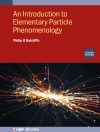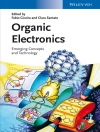The development of humankind’s ultimate energy source, nuclear fusion, has proceeded slowly but surely over the course of the last 60 years. This comprehensive book aims to outline a realistic, comprehensive, self-consistent, analytic theory of tearing mode dynamics in tokamak plasmas. It discusses a fluid theory of a highly magnetized plasma that treats the electrons and ions as independent fluids, and then proceeds to develop the theory of tearing modes, first approximating the geometry of a tokamak plasma as a periodic cylinder, but eventually considering the toroidal structure of real tokamak plasmas. This book also describes the stability of tearing modes, the saturation of such modes, and the evolution of their phase velocity due to interaction with other tearing modes, as well as the resistive vacuum vessel, and imperfections in the tokamak’s magnetic field. This text would appeal to scientists and graduate students engaged in nuclear fusion research, and would make a useful reference for graduate plasma physics courses.
Key Features
- Develops a systematic theoretical framework for the investigation of tearing mode dynamics in tokamak plasmas
- Starts with the simple cylindrical linear approach and gradually introduces more realistic features such as nonlinear effects, neoclassical effects, and toroidal effects
- Includes systematic exploration of error-field penetration in tokamak plasmas
- Includes systematic exploration of the rotation and locking of tearing modes due to their interactions with resistive walls and error-fields
Spis treści
1 Introduction
2 Plasma fluid theory
3 Cylindrical tearing-mode theory
4 Reduced resonant response model
5 Linear resonant response model
6 Linear tearing-mode stability
7 Error-field penetration in tokamak plasmas
8 The nonlinear resonant response model
9 Nonlinear tearing-mode stability
10 Rotation braking in tokamak plasmas
11 The nonlinear neoclassical resonant response model
12 Neoclassical tearing modes
13 Mode locking in tokamak plasmas
14 Toroidal tearing modes
O autorze
Richard Fitzpatrick is a professor of physics at the University of Texas at Austin, where he has been a faculty member since 1994. He is a member of the Royal Astronomical Society, a fellow of the American Physical Society, and the author of Maxwell’s Equations and the Principles of Electromagnetism (2008), An Introduction to Celestial Mechanics (2012), Oscillations and Waves: An Introduction (2013), Plasma Physics: An Introduction (2014), Quantum Mechanics (2015), Theoretical Fluid Mechanics (2018), and Newtonian Dynamics: An Introduction (2022).












